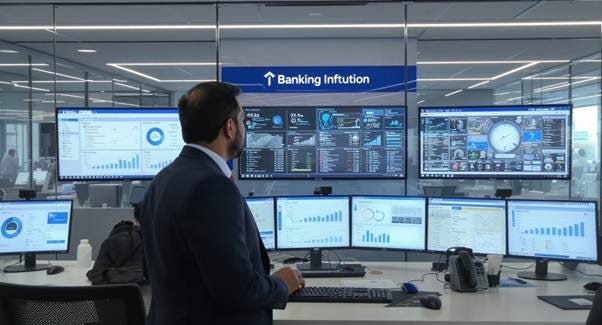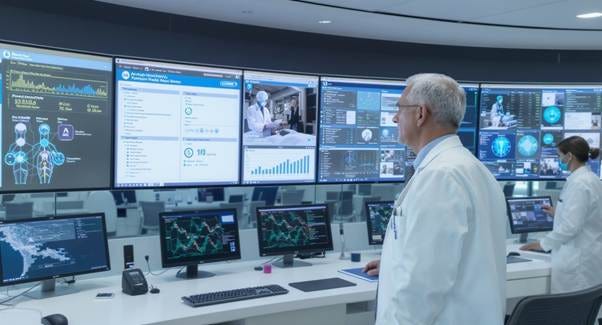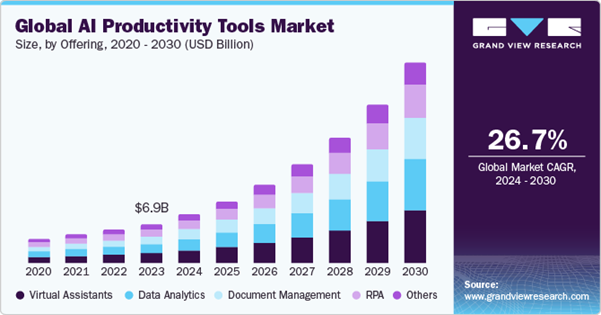
As I explored in my previous articles, AI is reshaping industries. This can go, constructively, only one way forward: By empowering professionals to transcend traditional limitations.
We slowly see such a change. Across sectors, forward-thinking individuals are embedding AI into their workflows, turning mundane tasks into springboards for innovation and efficiency.
Of course, we have those who are taking advantage of the AI growth, and appear as experts with solutions that will make you rich (mostly workflows) and they are getting rich in the process…
In any case, this AI shift redefines what it means to be a "power player" in today’s workforce: Those who leverage AI to achieve remarkable productivity gains while preserving the human insight that fuels meaningful progress.
In this article, I will provide profiles of six professionals who have mastered AI collaboration. However, while the profiles are fictional, they are inspired by real-world people and AI applications. In that way, I blend fact and fiction to demonstrate AI’s potential impacts. Their stories span architecture, business services, finance, healthcare, and marketing, showcasing specific tools and workflows. These individuals echo the themes from my earlier work, particularly in "The Future of Work" demonstrating we have to make AI about amplifying human potential to address complex challenges with unparalleled speed and precision. Because the alternative is going to be ugly …
As someone with both AI and business education, and who has extensively used AI workflows to upgrade my business, I hope some of you will be inspired by these examples and put AI to use - rather than letting AI use you!
Joe the Architect: Revolutionizing Design Communication in Architecture

Joe, is an architect who specializes in commercial projects. Joe has long dealt with the chaos of client communications. In the architecture industry, where projects involve sophisticated details and multiple stakeholders, staying on top of email threads can consume hours daily.
Joe integrated Google's Gemini AI into his Gmail workflow. This tool scans lengthy email chains, summarizes key points, and highlights client needs, such as design revisions or budget constraints. His process involves forwarding complex threads to Gemini, which generates concise overviews, allowing him to respond with tailored proposals. Previously, Joe spent up to two hours per day sifting through emails manually, often missing subtle details that led to rework.
Post-AI adoption, Joe's productivity soared. He now processes communications 50% faster, reducing daily email time to under an hour and minimizing errors in client tracking. This has freed him to focus on creative design work, resulting in a 20% increase in project throughput and higher client satisfaction scores.
Lauren Magenta: Streamlining Client Outreach in Business Services

As the founder of Own Your Brand, a consultancy helping entrepreneurs build personal brands, Lauren Magenta operates in the fast-paced business services sector. Her days involve producing personalized pitches to potential clients, a task that once required hours of brainstorming and drafting.
Lauren employs Gemini for Google Workspace to generate initial email drafts. She inputs client details, such as industry and pain points, and the AI produces customized templates that she refines for authenticity. This workflow integrates with her CRM system, pulling data to ensure relevance. Before AI, drafting 10 personalized emails took her an entire afternoon, limiting her outreach to 20 prospects weekly.
With Gemini, Lauren has cut drafting time by 60%, enabling her to contact 50 prospects per week. This boost has led to a 35% increase in client acquisition rates, transforming her solo operation into a more scalable venture while preserving her unique voice in communications.
Ratan Kesh: Enhancing Customer Service in Finance

Ratan Kesh, Executive Vice President and Head of Retail Operations and Service at Axis Bank in India, oversees customer interactions in the competitive finance industry. With millions of inquiries annually, traditional call centres struggled with efficiency and language barriers.
Kesh spearheaded the deployment of AXAA, an AI-powered voice assistant using speech recognition and natural language processing (NLP). The workflow involves AXAA handling initial queries in English, Hindi, or Hinglish, escalating complex issues to human agents. It analyses call patterns to predict common questions and provide instant responses. Prior to AXAA, agents managed an average of 50 calls per shift, with high drop-off rates due to long wait times.
After implementation, AXAA handles 12-15% of calls with 90% accuracy, reducing interactive voice response (IVR) traversal times significantly. This has increased agent productivity by 25%, allowing them to focus on high-value interactions, and improved overall customer satisfaction by 20%.
Tom Mihaljevic: Optimizing Patient Care in Healthcare

Dr. Tom Mihaljevic, President and CEO of Cleveland Clinic, leads one of the world's premier healthcare institutions. In an industry plagued by rising costs and administrative burdens, Mihaljevic turned to AI to enhance operational efficiency.
The clinic's AI-driven patient portal, or "advice companion," supports chronic disease management by analysing patient data and providing personalized guidance. Workflows include integrating AI with electronic health records for predictive analytics on patient influx and surgery scheduling. Mihaljevic also established the Centre for Clinical Artificial Intelligence to develop tools for real-time clinical decision-making. Before AI, the clinic faced a $200 million operating loss in 2022, exacerbated by manual processes and a 20% rise in drug expenses.
AI adoption flipped this narrative, achieving a 0.4% operating margin on over $14 billion in revenue by 2023. Productivity metrics show a 30% reduction in administrative time for staff, enabling more patient-focused care and offsetting cost increases through efficient resource allocation.
Jamie Dimon: Accelerating Legal Reviews in Finance

Jamie Dimon, CEO of JPMorgan Chase, has championed AI in the finance sector to tackle the tedium of contract analysis. With thousands of commercial credit agreements processed annually, manual reviews were a bottleneck.
Dimon introduced COiN (Contract Intelligence), an AI platform using machine learning and image recognition on a private cloud network. The workflow scans documents, extracts key clauses, and flags anomalies for review. Previously, legal teams spent 360,000 hours yearly interpreting agreements, prone to errors and delays.
COiN slashed this to mere seconds per document, processing 12,000 contracts annually with reduced mistakes. This represents a staggering 99.9% time savings, freeing analysts for strategic work and contributing to firm-wide efficiency gains, including lower loan-servicing errors.
Tristan Barnum: Boosting Marketing Operations
Tristan Barnum, Chief Marketing Officer at Wildfire, a customer loyalty and rewards company, thrives in the dynamic marketing industry. His role demands quick contract iterations, meeting summaries, and performance reviews.
Barnum leverages ChatGPT and Claude.ai for drafting contract addendums, inputting parameters to generate editable text. For meetings, he uses transcription tools like Otter.ai, feeding outputs into ChatGPT to create notes and presentation outlines. In reviews, AI performs pattern recognition to categorize notes by core values. Before AI, crafting addendums took hours, and reviewing notes spanned days.
Now, addendums are completed in 30 minutes or less, and note organization is instantaneous. Overall, Barnum reports a 40% productivity uplift, reducing context-switching time (averaging 23 minutes per interruption) and allowing more focus on strategic initiatives.
Conclusion

These profiles illustrate a common thread: AI collaboration isn't a one-size-fits-all solution but a tailored augmentation that addresses specific pain points. From Gemini's summarization prowess to custom platforms like COiN and AXAA, these tools integrate flawlessly into existing workflows, yielding tangible metrics like time savings of 50-99% and revenue impacts in the millions.
Yet, success hinges on more than technology. These power players emphasize ethical implementation, continuous learning, and human oversight to mitigate biases and ensure quality.
As AI evolves, professionals who master this synergy will lead their fields, driving not just productivity but innovation.
Looking ahead, the implications are profound. McKinsey estimates AI could add $4.4 trillion in productivity growth globally, but only if adopted thoughtfully. For aspiring power players, the message is clear: embrace AI as a partner, and unlock your full potential in the modern world.


